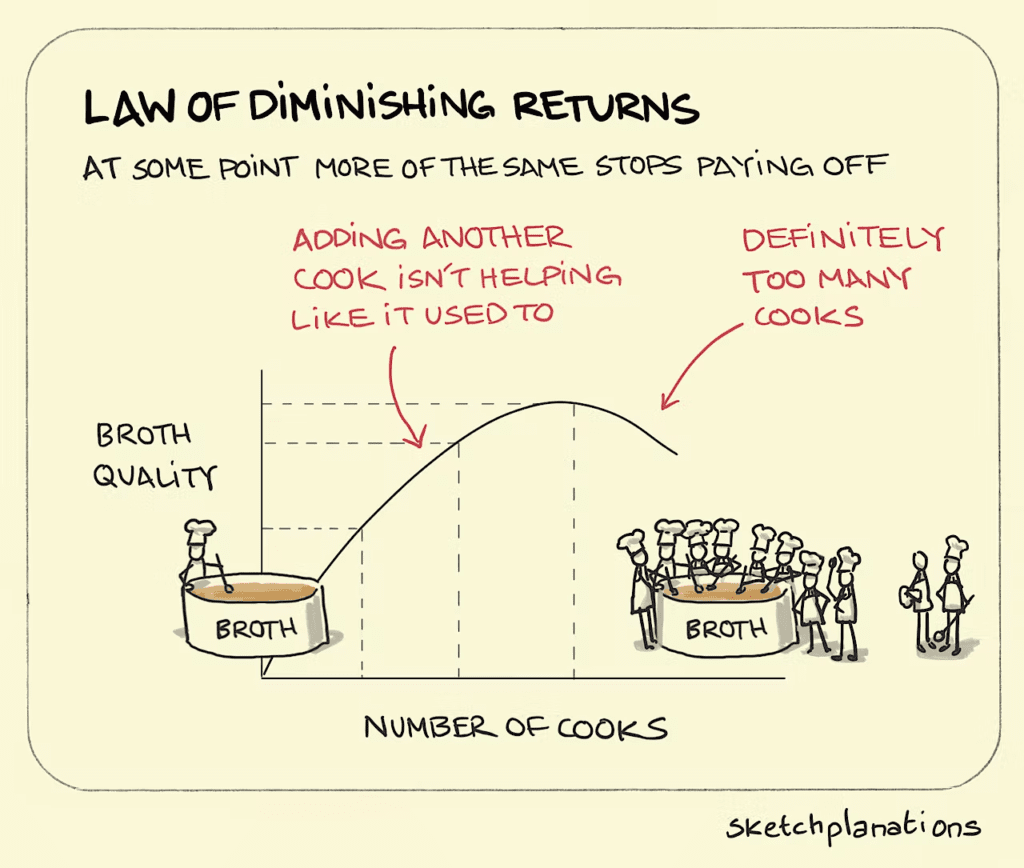If you’re running paid search campaigns, you may have noticed that it’s not always easy to get the results you want. You might think that increasing your bids will lead to more clicks and conversions, but that’s not always the case. In fact, there’s a point where increasing your bids will only cost you more money without delivering any additional benefit. This is where the law of diminishing returns comes in. It’s a concept that applies to many areas of life, including PPC campaigns. When you’re running paid search ads, you’re contending with this concept and many other factors that are outside of your control.
In this post, we’ll explore the law of diminishing returns and the various factors that are making paid search even more challenging today. By understanding these concepts, you’ll be better equipped to set realistic expectations for your PPC campaigns and improve their overall performance.
Law of Diminishing Returns
This goes a bit off the topic of advertising spend, but it is worthwhile understanding the principle.
In economics, there’s a concept called the law of diminishing returns. This law states that as a business invests more resources into a particular area, such as production or marketing, the rate of return on that investment will eventually reach a point where it can no longer continue to increase.
In other words, if all other variables remain constant, investing more in that area will actually lead to a decreased rate of return. At a certain point of expansion, the additional units produced (also known as marginal ROI) will start generating negative returns.
Once this point is reached, the total outcome of the investment will begin to decline. Even if it remains positive, it will not be as high as the maximum return that was achieved earlier.

The optimal level of investment is where the marginal ROI equals zero. The law of diminishing elasticity shows that the supply of a product or service eventually becomes unresponsive to price changes. Price elasticity measures how responsive the demand or supply is to a change in price, with a value greater than one indicating elasticity, and less than one indicating inelasticity.
The law of diminishing elasticity suggests that there’s a limit to how much supply can respond to changes in price. Price elasticity measures how responsive demand or supply is to price changes, with values greater than one indicating elasticity and less than one indicating inelasticity. The optimal level of investment is where marginal ROI equals zero.
How does this work in advertising?
The concepts of diminishing returns and elasticity also apply to advertising, particularly in PPC campaigns. To get more traffic and conversions, you may have to be more aggressive and increase your bids, which could result in higher conversion costs.
However, as the cost per click (CPC) goes up, you may notice smaller and smaller increases in traffic. Eventually, you may reach a point where you cannot get more traffic from a particular keyword, such as when your ad ranks #1 for all relevant searches with 100% impression share.
PPC can get expensive because of the law of diminishing returns. As you scale your campaign to get more traffic and sales, the cost increases in a non-linear way. If you double your traffic and sales, you’ll also double the cost per click (CPC), resulting in a four-fold increase in budget. However, it’s unrealistic to think that doubling your budget will always double your sales in a given channel. Expansion can be costly, so it’s important to keep your expectations in check when creating your marketing and business plans.
In the world of advertising, the laws of economics and free market dictate that Google, Meta, and other ad platforms take a large percentage of a business’s sales margin before any fixed costs are considered. While this may not be ideal, it’s simply how the system works. By understanding these rules, businesses can create realistic expansion plans and avoid any potential disappointments.


